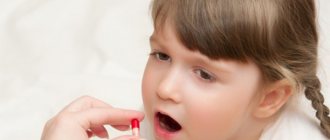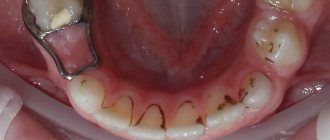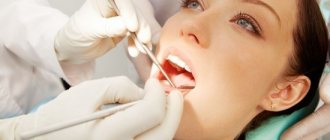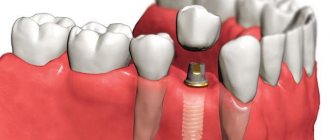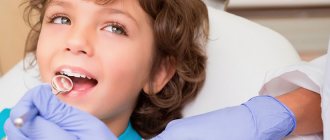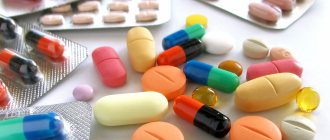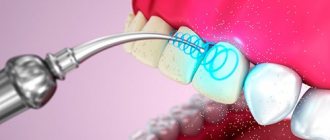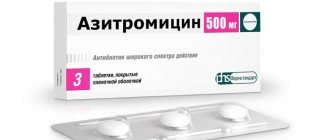What to do when plaque appears
Traditional medicine and simple advice will help you get rid of this unpleasant phenomenon on your own.
The following will help you cope with plaque of any color:
- Antiseptic solutions.
- Decoctions of beneficial herbs.
- Lollipops for sore throat.
https://www.youtube.com/watch?v=caUDnoTPWt8
Antiseptics will help “kill” pathogenic microorganisms in the oral cavity. An example is Chlorhexidine, a solution of Furacilin or potassium permanganate. You can prepare an antiseptic solution from improvised means, using soda and salt. If the medications “bake” or burn the oral cavity too much, you should consult a dentist.
You rinse your mouth with these solutions every day, after meals and at night. It is advisable to clean your tongue with a soft brush before the procedure.
Chamomile is considered a natural antiseptic, and calendula stimulates the regeneration process. A decoction is prepared from these herbs by mixing them in equal proportions. You can use the decoction for a long period of time, but first make sure that there is no allergy to it.
If you have thrush, you should regularly apply honey to the roof of your mouth and tongue, or simply add it to tea with linden and chamomile - this will help get rid of the disease faster.
Cough or sore throat lozenges also contain topical antiseptics. They help remove plaque, but it is recommended to use them after consultation with a specialist.
Attention! You should not use Iodine, Zelenka or rinse your mouth with alcohol - these substances are too aggressive and can harm the mucous membrane.
Plaque on the surface of the tongue is an abnormal phenomenon, often a sign of disease of the gastrointestinal tract of the liver or gallbladder. For this reason, you should not wait until “everything goes away on its own”; it is better to immediately consult a doctor. This will help avoid complications.
Causes
Antibacterial drugs do not separate flora into beneficial and harmful microorganisms.
Most often they are made of synthetic materials that “kill” everything in their path. The body suffers especially greatly from broad-spectrum antibiotics. By using them, a person reduces the intensity of the inflammatory process in his body, but instead gets other problems, for example, candidiasis. After taking antibacterial drugs, the intestines suffer, which find it difficult to function without bacteria and vitamins.
Why do Candida fungi multiply so actively after taking antibiotics? The thing is that they are present in small quantities in our body, whether we want it or not. But we are protected from their active reproduction by our own immunity and beneficial bacteria.
When taking antibacterial drugs, beneficial “defenders” die, and no one prevents fungi from multiplying on the skin or mucous membranes of the body. Conventional antibacterial agents do not act on fungi, so they easily affect organs such as the vagina, oral cavity (in children), hands, feet, nails, groin area and others.
How to identify the disease in time and protect yourself from the development of candidiasis?
Research will certainly show whether candidiasis appeared while taking antibiotics.
A child is more susceptible to oral candidiasis - the reason lies in immature immunity. But this pathology does not bypass adults either. Often, it is pregnant women during the period of restructuring of the hormonal system that are haunted by unpleasant manifestations of oral candidiasis.
Healthy men and women suffer from thrush extremely rarely, but smoking and long-term use of antibacterial drugs become a provoking factor for the development of candidal stomatitis.
Sometimes the cause of oral mycosis in men is gastrointestinal infections and frequent trauma to the mucous membranes. By eliminating the cause and using antifungal medications, treating candidiasis is quite simple.
The disease occurs in various forms. They are classified into acute and chronic, subdivided into atrophic or pseudomembranous candidiasis. Chronic diseases include atrophic and hyperplastic candidiasis.
Thrush usually settles on the cheeks, but can be localized on the palate, tongue, and even affects the gums. The disease affects a wide number of people; infants are more likely to suffer, and adults are less likely to suffer. Acute pseudomembranous candidiasis affects any part of the oropharynx.
The pseudomembranous form of candidal stomatitis occurs against a background of weakened immunity. In advanced stages, the surface affected by the Candida fungus becomes covered with a plaque that is difficult to clean off, erosions form, which subsequently begin to bleed, and the body temperature can reach 39 degrees.
Acute atrophic, or erythematous, form of candidiasis can affect any part of the oral cavity, but most often develops on the tongue. For acute atrophic candidiasis, the characteristic signs are:
- feeling of dryness in the oropharynx;
- pain that occurs during eating and long conversations;
- the inflamed areas itch.
Chronic atrophic candidiasis occurs with greater frequency in people who use dentures. Symptoms are mild, many patients do not notice changes in the mucous membranes for a long time. Sometimes the disease leads to the formation of swelling in the corners of the lips or the appearance of erythema.
This type of candidiasis usually affects the cheeks and tongue. The patient has whitish spots and plaques on the mucous membranes, the shape of which can be completely different. The affected areas may become inflamed, with redness appearing around the white patches.
Experts say that healthy people can also be carriers of Candida fungi. These microorganisms are present in approximately half of the people on Earth, and the human body is capable of peaceful coexistence with fungi.
Experts identify the following factors for the activation of fungi and the development of oral candidiasis:
- Immunodeficiency, weakened immune system, lack of immune cells;
- The presence of concomitant ailments, tuberculosis, HIV infection, diseases of the gastrointestinal tract and adrenal glands. Often, candidiasis of the oral mucosa in adults is considered one of the first signs of diabetes;
- Taking medications that suppress the immune system, for example, cytotoxic and corticosteroid drugs;
- Long-term courses of antibiotic treatment. Antibiotics, when used for a long time, cause disruption of the normal microflora of the body and change the ratio of microorganisms in it. At the same time, fungi that are not affected by antibiotics begin to actively reproduce in the absence of competitors;
- Radiation therapy given to patients with malignant tumors;
- Dysbacteriosis, lack of vitamins C, PP and group B. Synthesized in the human body by bacterial microorganisms;
- Alcoholism, drug addiction. Reduce immunity and destroy the balance in the body;
- Minor injuries to the oral mucosa. Occurs in the presence of dental damage or malocclusion;
- Taking oral contraception. Causes hormonal imbalance, creating ideal conditions for the appearance of a fungal infection;
- Wearing dentures. This applies to cases where dentures cause injury to the oral mucosa or are not fitted correctly. Acrylic dentures can cause allergies, which allows the fungus to penetrate cellular structures.
Oral thrush in adults or children can be spread from an infected person to other people, for example during childbirth, when fungi living in a woman's vagina are passed on to her baby. This disease can spread through kissing and sexual contact, when several people use the same toothbrush, shared dishes and cutlery. It is possible that people can become infected from animals, for example, while playing with a kitten or puppy.
IMPORTANT: To treat candidiasis in the mouth, you must consult a periodontist (a specialist in the soft tissues of the oral cavity) or a dentist. When the mucous membranes and internal organs are affected by the fungus, specialists such as an infectious disease specialist and mycologist are included in the treatment process.
The causative factors of oral thrush are yeast fungi of the genus Candida. They parasitize squamous epithelial cells consisting of several layers. This is due to the high content of glycogen in these cells, which these fungi “really love.”
These pathogens do not always lead to the development of inflammation. Their pathogenicity varies widely and largely depends on the state of the human body (general and local), the number of living fungi and the state of the microbiocenosis in the oral cavity.
Primary infection with candida occurs in different ways:
- During pregnancy (intrauterine method);
- During childbirth, if the woman's genital tract is infected. Moreover, this does not depend on whether there are clinical manifestations of urogenital candidiasis or not;
- During contact between mother and child or medical personnel with the baby.
However, not every infection of a child leads to the subsequent development of stomatitis. This largely depends on the disruption of microbiocenotic relationships in the oral cavity.
Normal microbiocenosis is a reliable factor of protection against various infectious and inflammatory complications.
- Streptococci;
- Lactobacilli;
- Staphylococcus;
- Candida.
At the same time, bacteria from the E. coli group should never be detected in the oral cavity.
They always talk about an imbalance in the microbial landscape and an increased risk of developing inflammatory conditions, incl. and candidiasis.
Common causes predisposing to candidal stomatitis are:
- Irrational use of antibacterial drugs;
- Pathological course of the neonatal period, incl. and caused by prematurity or postmaturity;
- Conducted radiation treatment, incl. and frequent repetitions of radiographic examination of the dental system;
- Operations;
- Intestinal infections;
- Impaired absorption due to pathology of the digestive system;
- Allergies;
- Decreased immunity;
- Impaired metabolism.
Local factors also play an important role:
- Violation of the rules of hygienic oral care;
- Immaturity of the mucous membrane in children;
- Traumatic damage to the mucous membrane of various types;
- Multiplicity of carious process;
- Wearing orthodontic appliances;
- Abuse of carbohydrates (various sweets and baked goods);
- Inflammatory diseases of the dental system.
The main reasons for the appearance of brown plaque
Every morning a person performs an important ritual, which necessarily includes cleaning the oral cavity. During sleep, new bacteria form in the mouth, and the organ becomes covered with plaque, which is why cleaning the mucous membrane (in addition to the teeth) is simply necessary.
If the epithelium has become transparent white, then there is no reason to worry at all. This is a common and fairly common occurrence after a long period of sleep. A darker plaque – yellow – may be quite harmless, but if it is difficult to remove such a formation and a simple brush cannot cope with this task, it is worth more carefully understanding the reasons why the organ has lost its former color.
The main and common reasons for the appearance of dark plaque include:
- long-term smoking;
- drinking caffeine in large quantities;
- drug treatment of other ailments;
- fungal diseases of the oral cavity;
- dysbacteriosis;
- stomatitis;
- avitaminosis;
- other rare diseases.
The content of tar and various additives in cigarettes causes plaque to appear not only on the tongue, but also on the lips. The longer a person smokes, the more the natural dye affects his mucous membranes and skin.
https://www.youtube.com/watch?v=MQPdS7IZ-xQ
Coffee turns the organ brown
Products that can change the color of the tongue do not often prevail in the daily diet, but popular drinks, like strong black coffee, are constantly in contact with the epithelium, thereby affecting it. Dark chocolate has a similar effect, but its consumption is several times less than coffee.
Otherwise, neither coffee nor chocolate are the true culprits of a brown tongue.
A clue in such a situation can be the shade of the teeth, because caffeine, like nicotine, stains the bone. Yellowed teeth combined with a dark tongue are a clear sign of neglect of a healthy lifestyle. Although the yellow-brown coating on the tongue may look unsightly, it is harmless and does not pose any serious threat.
Mycotic plaque - fungal glossitis
When treating colds, inflammation of the throat and other ailments, strong antibiotics or local drugs are prescribed that affect the general condition of the mucous membrane. Potent medications are accompanied by instructions indicating the entire list of side effects, including a brownish coating that affects the root or base of the tongue.
Symptoms of oral candidiasis
At the very beginning of the disease, the fungus penetrates cellular structures, where it multiplies and secretes enzymes that irritate the mucous membranes and destroy nearby tissues. This leads to a feeling of dryness, swelling and redness, increased sensitivity and soreness in the patient's mouth.
Fungi actively reproduce, resulting in the formation of pseudomycelium. The accumulation of yeast-like microorganisms is represented by a white cheesy coating, slightly rising above the level of the mucous membrane.
Initially, plaque appears as small white grains on the inner cheek surface. Over time, the volume of plaque increases, it degenerates into small plaques and films. The affected areas may grow and merge against the background of existing tissue redness.
Plaques subsequently also appear on the tongue, gums, tonsils and palate. When the skin on the lips is affected, whitish flakes and scales appear on their surface.
At the initial stage of the disease, plaque can be easily eliminated; underneath there is a bright red surface, often affected by small ulcers. This is due to the fact that the enzymes secreted by the Candida fungus quickly penetrate deep into the oral mucosa.
Burning and itching during illness appear due to irritation and an allergic reaction. The patient experiences discomfort when swallowing saliva and eating spicy, hot and sour foods. If the fungi are localized on the mucous membrane of the pharynx, then difficulty swallowing and sensation of a foreign body in the throat may occur.
White coating on the tongue after antibiotics
July 3, 2020, 10:02 am
The dermatologist prescribed treatment, took azithromecin, 2 tablets in the morning, for 6 days, flagyl, 1 tablet 3 times a day. On the 5-6th day of treatment, I saw that the tongue had become completely white, with a thick coating. I'm guilty of taking an antibiotic. But I still have to take it for 12 days, 1 tablet. What do you advise? Could this be due to the antibiotic? And how can you remove plaque? Can't be removed with a spoon or brush.
July 3, 2020, 12:22 pm
Why did you go to the dermatologist? White plaque primarily indicates gastrointestinal diseases
July 3, 2020, 12:56 pm
Why did you go to the dermatologist? White plaque primarily indicates gastrointestinal diseases
July 3, 2020, 12:57 pm
and not even a disease, but malnutrition
July 3, 2020, 1:05 pm
The tablets killed the intestinal flora and that’s the plaque, after a course of tablets, start restoring the intestinal flora, drink probiotics, bifidumbacterin, Narine, Acipol, etc. Better yet, ask your doctor about probiotics
July 3, 2020, 3:36 pm
https://www.youtube.com/watch?v=i-kmcrF7k_0
the white coating is candida. She “climbed” from other parasites killed by antibiotics. take nystatin 1t 3 times a day, it’s strange that they didn’t advise you to do this. Rinse your mouth with water and added tea tree oil.
July 3, 2020, 5:42 pm
what is candida. something alive? I had wormed several times before as a preventive measure. The doctor treated demodicosis.
July 3, 2020, 8:48 pm
So how can it be cured? this candida.
July 3, 2020, 9:40 pm
So how can it be cured? this candida.
They wrote to you above. I restored the intestinal microflora with Linex. It helped.
which method to use, or rather which drugs - decide for yourself)
July 3, 2020, 9:41 pm
So how can it be cured? this candida.
In general, do not try to clean off this plaque with anything. Until you restore the intestinal microflora, the plaque will not disappear.
July 3, 2020, 9:55 pm
I’ll take care of this matter as soon as possible.. it’s just that Linux is so expensive(
July 3, 2020, 11:34 pm
I’ll take care of this matter as soon as possible.. it’s just that Linux is so expensive(
Don’t skimp on your health :) Here’s what you were advised above, try what’s listed above)
July 4, 2020, 5:34 pm
There may be a manifestation of thrush.
Prevention of dysbiosis in the mouth
Prevention of oral dysbiosis includes the following measures:
- use of antibiotics only as prescribed by a doctor in the recommended course;
- use of alcohol-free and antiseptic rinses for daily oral hygiene, for example, ASEPTA Parodontal Fresh with plant extracts and microelements;
- smoking cessation: it is advisable to eliminate smoking altogether;
- strengthening local immunity: timely sanitation of the oral cavity, maintaining oral hygiene. You also need to strengthen your general immunity.
The main advice for normalizing the microflora of the oral cavity: do not feed the bad microbiota and do not destroy the good one.
Let's summarize: we have given a definition of oral dysbiosis, which is understood as a violation of the ratio between normal and pathogenic microflora in the direction of increasing the latter. They indicated that this condition is not an independent disease, but only a complex of symptoms. The stages of formation of oral dysbiosis, symptoms and causes of disturbances in the microflora of the oral cavity were named. Also from this article you learned how to treat oral dysbiosis and how to prevent its occurrence.
White coating on the tongue after taking antibiotics
In the section to the question after a course of antibiotic treatment, a white coating appeared on the tongue asked by the author Yovetlana Andreeva. The best answer is, firstly, dysbacteriosis, and secondly, gastritis - the gastric mucosa is damaged. Take Linex, ACIDOPHILIUS from Enrich gives very good results, at the same time - Mezim -forte during meals. Two weeks.
Primary source: Family doctor practice
Drink Linex, the intestinal microflora is disturbed.
maybe dysbacteriosis, or the liver was affected.
The intestinal microflora was disturbed... you need to drink Bifutombacterin or Linex. But it’s still better to consult a doctor on such issues. Good luck
The body's reaction. It will pass. It would be nice now to take bactisubtil to restore stomach flora.
This is a slight deterioration in the functioning of the gastrointestinal tract (gastrointestinal tract), which happens very often after treatment with antibiotics, because They kill not only harmful microbes, but also beneficial microflora of the body.
A course of nystatin, then Linex, bifidumbacterin and vitamins. This pathogenic microflora has multiplied. You need to kill it, then introduce beneficial microflora and support it with vitamins.
This is a fungal infection. To prevent it, you need to take Linex, yogurt capsules. In order to prevent this from happening in the future, in combination with antibiotics, you need to take antifungal drugs (nystatin), in addition, also gapatoprotectors (Levasil, Essentiale), the same yogurt. And all will be well.
MORE ABOUT: Pantocalcin: instructions for use, price, reviews, analogues, for children
White dots on the tongue can be easily removed, for example, with a spoon!? This is thrush due to decreased immunity and antibiotics taken (although most often it happens in a different place) Buy borax in glycerin and lubricate the affected areas or go to the doctor!
You need to thoroughly clean your tongue with a toothbrush and toothpaste and everything will go away.
Candidiasis. Dairy and seafood (such as seaweed) are not allowed, splats are not allowed. Here. Better yet, see a doctor.
Linex or Hilak Forte month. NECESSARILY.
These are bacteria of the genus Candida
As far as I remember, doctors call it “penicillin tongue,” no matter that it was not penicillin that was taken, but antibiotics in general. And the main thing is really in the intestines.
if the stool is disturbed, dysbacteriosis, primadufilis, the best remedy against this disease is 2 days of kefir at night, for 10-15 days
White plaque in the mouth - what is it?
Among ordinary people, a disease such as oral candidiasis is called thrush. Yeast-like fungi such as Candida often affect the mucous membranes of newborn children, pregnant women and smokers.
In medical practice, there are several varieties of Candida fungi that can settle in the human body. These include:
- albicans;
- tropicals;
- krusei, etc.
A patient suffering from mycosis complains of a feeling of dry mouth, swelling and increased temperature of the mucous membranes. There is a white coating in the mouth, the affected area itches, and there is a burning sensation.
Additional symptoms
Antibiotics do not work selectively, but destroy both harmful and beneficial microflora, and in addition to a white coating on the tongue, the patient may experience:
- increased gas formation;
- constipation alternating with loose stools;
- itching in the anus;
- heaviness and pain in the abdomen.
Note! There is also vaginal dysbiosis, its symptoms are as follows:
- itching;
- increased sensitivity;
- frequent urination;
- discharge from the genitals;
- burning in the urethra;
- pain in the lower abdomen.
Dysbacteriosis is an imbalance of microflora that can provoke an increase in the population of Candida fungi, which are normally constantly present in the human body.
With thrush, white deposits also appear on the tongue. Additional symptoms are also present:
- itching and burning in the genital area;
- discharge that resembles curdled milk with a sour odor;
- swelling of the mucous membrane;
- the presence of white plaque on the genitals.
Important! Thrush can be transmitted to a sexual partner, so treatment should be started as soon as possible.
- Liver cells constantly pass blood through themselves and cleanse it of breakdown products of medications, alcohol and other things.
- After long-term use of antibiotics, the liver becomes clogged - the gland can no longer cope with incoming toxins.
- In addition to plaque on the tongue, drug-induced liver damage manifests itself:
- pain in the right hypochondrium;
- bitter taste in the mouth;
- diarrhea;
- failure of the kidneys - swelling of the lower extremities;
- the appearance of skin rashes.
Stay up to date! If many toxic breakdown products of antibiotics accumulate in the liver, the development of:
- cholestasis;
- allergies;
- drug hepatitis;
- fibrosis.
Connection of the tongue with internal organs
Even a healthy person has tongue plaque. It is transparent and odorless, easy to clean. If the internal organs of the human body begin to work with deviations from the norm, this will become noticeable in the condition of the tongue surface. Why does plaque appear on the tongue? It may be surprising to some, but a certain part of the tongue is responsible for some internal organ.
And if changes in color and structure occur on this part; a burning sensation, spots or plaque appears, which is not easy to get rid of, you need to sound the alarm. This means that there has been a malfunction in the functioning of a certain organ, it’s time to go to the doctor and put your body in order. This may be an important signal of a dangerous disease.
What to do if a plaque appears on your tongue?
Now a little about which part of the tongue surface is responsible for what in the body:
- the tip is responsible for the intestines and rectum;
- the middle is responsible for the stomach;
- a groove in the middle will signal diseases of the spine;
- the left side is the area of the spleen;
- the right side has an invisible connection with the liver.
It is also worth taking a closer look at the thickness of the plaque. If it can be easily cleaned off, then this indicates a primary or initial stage of the disease. A thick coating on the tongue and bad breath indicate a chronic disease or the onset of severe infectious processes in the body.
READ MORE: How to support your heart after chemotherapy
How to get rid of yellow coating on the tongue?
Only a specialist can give competent recommendations on how to remove yellow plaque from the tongue after a comprehensive examination of the body, since this problem can only be dealt with by eliminating its cause. In addition, each case must have an individual approach.
In the process of diagnosing the cause of a yellow coating on the tongue, the following studies may be needed:
- general blood analysis;
- general urine analysis;
- blood chemistry;
- coprogram;
- stool analysis for dysbacteriosis;
- ultrasound examination of the abdominal organs and others.
Only after the cause of the plaque on the tongue is known, treatment begins.
For liver diseases, patients are prescribed medications that improve the passage of bile and prevent the formation of stones in the bile ducts. The drugs of choice in this case may be Alohol, Corn silk, Cholenzym, Holagon, Holosas and others.
For hepatitis, hepatoprotectors such as Karsil, Essentiale, Heptral, Gepabene and others must be included in complex therapy.
If liver damage has a viral etiology, then antiviral drugs such as Viferon, Intron, human interferon and others will be required.
In case of fungal infection of the digestive tract, which has caused plaque on the tongue, antifungicidal drugs are prescribed, namely: Fluconazole, Nystatin, Griseofulvin, Mycostat and others.
If the body is dehydrated, it is necessary to replenish the water balance, that is, rehydrate the body by drinking plenty of water or electrolyte solutions, and, if necessary, perform infusion therapy.
In case of intoxication of the body, detoxification therapy will be carried out, which consists of taking enterosorbents (activated and white carbon, Atoxil, Enterosgel) and infusions of solutions such as Reosorbilact, physiological sodium chloride solution, Disol, Ringer-Locke solution and others.
How to remove and treat?
Note! If plaque is caused by dysbacteriosis, medications that contain live bacteria are prescribed.
They must be prescribed by a doctor; these can be tablets, capsules, powder for preparing a suspension, suppositories and microenemas.
For the treatment of dysbiosis the following are used:
- Probiotics – contain live bifidobacteria and lactobacilli (Bifidumbacterin, Linex, Acipol).
- Prebiotics - contain lactulose - a nutrient medium for beneficial microflora (Normaze, Duphalac, Lactusan).
- Symbiotes - contain live bacteria and substances for their nutrition (Bifidobak, Biovestin Lacto).
If the plaque is caused by thrush, the first thing you need to do is follow a diet.
Know! The diet should be based on fermented milk products, which will restore the balance of microflora, and the number of fungal microorganisms will again be controlled by beneficial bacteria.
You should also use:
- legumes;
- fruits and vegetables;
- natural fresh juices and compotes.
- It is recommended to wear underwear made from natural materials, as synthetic underwear does not allow the skin to breathe.
- Oral and genital hygiene is very important.
- Drug treatment is prescribed as the disease progresses:
- System tools are used. They eliminate fungal colonies in the digestive tract, which have a complex effect on the rest of the body.
- Local drugs are used that have an effect on the causative agent of the disease.
- Immunomodulatory drugs. Increases the body's overall resistance to various pathological agents.
Reference! The following antifungal drugs are used:
- Nystatin;
- Pimafucin;
- Mikozan;
- Clotrimazole;
- Zalain;
- Livarol;
- Ginofort;
- Diflucan;
- Itrazol and others.
It must be said that treatment of thrush after taking antibiotics does not always necessarily require the prescription of antifungal drugs.
You should know! Sometimes microflora can be restored with proper nutrition. As soon as the microflora is restored, the coating on the tongue will disappear.
Treatment of the liver after taking antibiotics involves the use of traditional methods or medications.
The following herbs are useful for cleansing the liver:
- chicory;
- corn silk;
- milk thistle;
- calendula;
- St. John's wort;
- rosehip and many others.
As for medications, the following are prescribed:
- essential phospholipids – Phosphoglyph, Essentiale Forte;
- Ursofalk and its derivatives;
- plant flavonoids - Gepabene, Galstena, Karsil and their analogues.
Important! In addition, dietary food is prescribed - it is necessary to exclude salty, fatty, fried, spicy, as well as alcoholic drinks.
Recommended to use:
- low-fat soups;
- porridge;
- seafood and lean fish;
- vegetables;
- dairy products;
- garlic;
- honey;
- dried fruits;
- nuts;
- turmeric.
Varieties
For a fungus to affect the oral cavity, several factors must contribute to this. Based on the general condition of the fungus carrier, candidiasis of the oral mucosa has a different course and localization.
Thrush most often occurs in infants and older people. When the body is weakened by frequent colds, the patient has chronic diseases, then the immune forces are not able to resist pathogenic microorganisms - candidiasis affects the oral cavity.
Oropharyngeal candidiasis usually occurs after taking antibiotics. If dosages are not observed or treatment is prolonged, the beneficial microflora of the oral cavity is suppressed under the influence of medications, and pathogenic microorganisms take its place.
If thrush is in the initial stages of development, identifying it is extremely problematic. There are no pronounced signs; areas covered with a gray-white coating do not exceed 3 mm.
Treatment in this case is not required. As soon as the patient stops taking antibacterial drugs, the body's immune forces will allow you to get rid of thrush. In case of severe disease, it is necessary to take antifungal drugs, use antiseptics to suppress foci of fungal infection, and adhere to a special diet.
Mycosis of the gums
Young mothers often find a white coating in the mouth of newborns, implying that this is the remains of curdled milk. In fact, in most cases, this symptom indicates gum candidiasis. This is a common occurrence associated with infection of the fetus by Candida fungi during pregnancy or during childbirth.
Adults can also suffer from gum candidiasis. Mycosis occurs due to poor oral hygiene, smoking or taking oral contraceptives. People with dentures also experience discomfort from thrush.
Sometimes painful areas become covered with a white coating. As the fungal infection develops, when opening the mouth, the cracks bleed and the patient experiences discomfort. Treatment is prescribed by a highly qualified specialist.
Treatment of black tongue
There are no uniform recommendations on how to remove plaque from the mucous membrane. Usually, the treatment measures recommended by a specialist for the underlying disease are sufficient, and the entire area of the tongue is cleared and returns to its normal color.
In case of acidosis, it is prescribed to drink more fluids and take alkaline mineral water. Inflammatory pathologies are treated by rinsing with antiseptics and taking antibiotics orally.
Fungal infections are treated with antimycotics - tablets and drops on the tongue.
Only after a complete examination is treatment selected; independent therapy is unacceptable.
Gastrointestinal diseases are eliminated by correcting nutrition and taking medications:
- antisecretory agents;
- antacids;
- bile thinners;
- herbal choleretic agents;
- enzymes, etc.
It is also important to carry out regular oral hygiene 2-3 times a day, drink kefir and other fermented milk to normalize intestinal flora, and give up smoking and alcohol.
At home, you should rinse your mouth with infusions of sage, lemon peels (a tablespoon per glass of water), saline solution with tea tree oil (a teaspoon of salt and 5 drops of oil per glass of water).
MORE ABOUT: Hbs ag what kind of test during pregnancy - About health
This will speed up getting rid of black plaque and prevent relapse.
Share this article with your friends
Yulia, this thioctic acid improves carbohydrate metabolism and also reduces insulin resistance, so
What is more effective for inflammation and pain relief in the hip joint? How to give injections?
Svetlana, I don’t really understand how it works against both diabetes and polyneuropathy, I don’t know anything about it
Mom was also prescribed vitamins and also Thioctacid BV - this is for the treatment of neuropathy, she has had it for a long time
Treatment
Depending on the stage of the disease and its causative agent, therapy is prescribed, which may include:
- sanitation of the oral cavity. Plaque and tartar must be removed from the teeth, and carious cavities must also be filled, since they act as a breeding ground for pathogenic bacteria;
- taking antiseptics or antimycotics to eliminate pathogenic microorganisms;
- taking immunostimulants. These drugs help increase local and systemic immunity;
- consumption of vitamins. Vitamins A, E, C help restore the oral mucosa. In addition, with pathology, the absorption of nutrients is impaired, and vitamin complexes help to avoid a lack of vitamins and minerals.
Depending on the causative agent of the disease, antibacterial or antimycotic drugs are prescribed. To destroy bacterial microflora in the oral cavity, the following can be used:
Also, treatment of oral dysbiosis involves the use of prebiotics and probiotics. Prebiotics stimulate the development of beneficial microflora. They are not digested or absorbed in the stomach and intestines, but are broken down by the microflora of the large intestine, that is, they are food for bifidobacteria and lactobacilli.
Oral dysbiosis is a pathological condition accompanied by the uncontrolled proliferation of opportunistic flora as a result of an imbalance of bacteria in the oral mucosa. The disease leads to damage to tooth enamel and gums.
Plaque on the tongue after antibiotics
My husband and I, when we were being treated for ureaplasma, my husband had a plaque after treatment, I didn’t. I took vitamins, a month after the end of treatment.
And also at the end of treatment you need to take a flucostat tablet (for thrush in general).
Well, yes. Most likely it’s oral candidiasis. There’s nothing terrible, but you need treatment. From tablets: flucostat, fluconazole, nystatin. Rinse with soda solution (a teaspoon per glass) or weak manganese solution.
This happened to me too after treatment for ureaplasma. But I didn’t do anything, after 5-7 days it passed.
Most likely, the intestinal microflora has been disrupted by antibiotics, which is why there is a coating on the tongue. You need to drink a complex of bifido and lacto bacteria such as Linex, Normospectrum. It’s strange that the doctor didn’t tell me to take them while taking antibiotics.
Or just remove it with a spoon.
albina, please hold on. Everything will still happen, but later. For me, when the pregnancy froze, the table.
Good afternoon everyone) During this cycle I was stimulated with clostilbegit and Meriofert injections. Anyone else?
Yaschastliv@Ya, there are 3 phases of transformation, yours is early, it is not visible on ultrasound, only progic in the analysis.
Unfortunately, the day when my planning ended came. I dreamed so much about a second child, I was on my way.
Hello girls everyone. There are probably mommies on the site who have encountered pneumonia in children. Daughter
Good afternoon. My situation is a little strange. PA was at 18 and 19 DC. The husband left. Now delay 3.
In the morning my mother made a check, it’s barely visible, now it’s clear blue.
In this cycle, on day 13, an ultrasound confirmed the presence of a DF of 16mm. Endometritis 5.7. The urologist said so.
A visit to the gynecologist is not complete without taking smears from the vagina and urethra to determine the degree of cleanliness and phlegm.
The role of vitamin D in the body is difficult to overestimate: almost 3% of the human genome is regulated by its metabolism.
In ancient times, it was enough for a traditional healer to show his tongue to find out his diagnosis. Language is the best diagnostic assistant. Its condition and color can tell the doctor a lot
The dermatologist prescribed treatment, took azithromecin, 2 tablets in the morning, for 6 days, flagyl, 1 tablet 3 times a day. On the 5-6th day of treatment, I saw that the tongue had become completely white, with a thick coating. I'm guilty of taking an antibiotic. But I still have to drink it for 12 days. On the site there are 2 ANSWERS to the question after a course of antibiotic treatment, a white coating appeared on the tongue, you will find 18 answers.
The best answer about the white coating on the tongue after taking antibiotics was given on February 20 by the author Svetlana Andreeva. My husband and I, when we were being treated for ureaplasma, my husband had a coating after treatment, I did not. I took vitamins, a month after the end of treatment. and at the end of treatment you need to drink
Non-pathological causes
Brown coating on the tongue often occurs due to external factors. In this case, there is no pathology, and the color of the organ becomes normal after the causes are eliminated.
The dark surface of the tongue can be caused by:
- Smoking. Cigarettes contain heavy tar. They strongly stain the enamel of the teeth and tongue. In addition, hot smoke accelerates the death of epithelial cells.
- Chocolate. Bars or hot chocolate give the tongue a brown tint. Especially excessive consumption of these treats. The problem can be solved by cleaning the mouth and reducing cocoa-containing products in the daily diet.
- Drinks with pigments. Drinking black tea, coffee and some sodas (such as Coca-Cola) turns the tongue dark. It is recommended to avoid or significantly reduce the consumption of such products.
- Medicines. When taking certain medications, the tongue may turn brown. For example, due to antibiotics, Malavita, Faringosept, narcotic drugs, drugs containing the chemical bismuth (Pelto-Bismol) and others. There is no need to cancel your appointment. Symptoms will go away after completing the course.
- Alcohol. With alcohol addiction, the tongue becomes yellow-brown in color.
General rules and methods of treatment
When the first signs of an allergy appear on the tongue, the patient should be given first aid:
- Rinse your mouth with boiled water at room temperature or a decoction of hypoallergenic herbs.
- Take the sorbent with plenty of water.
- Take an antihistamine.
- If an acute reaction to taking the medicine occurs, you need to rinse your stomach and drink a saline laxative.
- If you suspect the development of Quincke's edema, immediately call an ambulance.
Medications
“Allergic tongue” must be treated with medications if the manifestations are acute or the disease is severe.
It is recommended to take antihistamines that will quickly relieve swelling, itching, and inflammation:
- Claritin;
- Zyrtec;
- Loratadine;
- Zodak and others.
Medicines in the form of drops that are taken under the tongue work very well. Antihistamines block the synthesis of histamine, but they cannot overcome the body's hypersensitivity to allergens.
Additionally, sublingual therapy is provided. This is treatment with medications based on the most common allergens in liquid form. Allergy sufferers are given minimal doses of the allergen, constantly increasing them. Thus, gradually reducing the body's sensitivity to the irritant.
Learn about the causes and treatment methods for book dust allergies in adults and children.
The symptoms of an allergy to wheat flour and the treatment of the pathology are written on this page.
Go to the address and read about how you can replace Analgin if you are allergic to the medication.
Traditional medicine recipes
Effective means:
- Pour boiling water (200 ml) over 1 spoon of dry chamomile. After 30 minutes, strain the infusion. Rinse your mouth with it 5 times a day.
- You can heal wounds on the tongue using a decoction of oak bark (1 spoon per glass of water).
- Brew 2 tablespoons of dry sage in ½ liter of water. Leave for 3 hours and filter. Use to rinse your mouth 6-8 times a day. The product has an antibacterial effect.
- Squeeze fresh potato juice and rinse your mouth with it (1/2 cup for 1 procedure).
- Pour oregano herb (1 spoon) with water at 90°C (200 ml). Keep in a warm place for 30 minutes. Use for rinsing as an antibacterial and anti-inflammatory agent.
Prevention measures
https://www.youtube.com/watch?v=XCFQTN-Y720
The best remedy for any form of allergy is the absence of contact with a potential allergen.
Following simple rules will help you avoid allergic manifestations for a long time:
- Do wet cleaning in the room more often and ventilate it.
- Regularly clean carpets and upholstered furniture, preventing dust and mites from getting trapped in them. If possible, avoid keeping sources of large amounts of dust at home.
- Use ionizers and air purifiers.
- Eat well, take vitamins.
- Avoid eating very hot, cold and spicy foods.
- Strengthen immunity.
Tongue allergies occur for many reasons and occur differently for everyone. The inflammatory process is not always allergic in nature. In no case should you self-medicate; you need to contact a specialist to find out the source of the disease and its cause. This is the only way to effectively eliminate unpleasant symptoms and prevent complications.
MORE ABOUT: Bitten by a cat, hand swollen, how to treat - Murkin Dom
We determine the disease by the nature of the mucus
For an initial diagnosis of the causes of a brown tongue, they rely on clinical examination data. The shade, location and nature of deposits are taken into account.
Different shades of plaque indicate problems of specific organs:
- light indicates lung disease;
- yellow – for excessive alcohol consumption, chronic gastrointestinal pathologies, side effects of certain medications;
- dark - exacerbation of chronic or severe systemic diseases of the digestive and urinary systems, respiratory infections, constant lack of fresh vegetables and fruits in the diet, dehydration;
- rich brown – insufficient lymph outflow, chronic pathologies of the respiratory system, inflammatory processes in the joints.
Sometimes the tongue turns brownish-green. This color indicates oral mycosis, adverse reactions of antibiotics or immunomodulatory drugs, an abundance of fatty and fried foods in the diet, and a lack of vitamins.
Reasons for the formation of oral dysbiosis
The reasons that lead to disturbances in microbiocenosis in the mouth are, for the most part, the same as for dysbacteriosis in other areas of the gastrointestinal tract. These include:
- prolonged and uncontrolled use of antibiotics;
- use of antibacterial and antiseptic agents for mouth rinsing. Long-term use of bactericidal rinses, antimicrobial toothpastes, and local antiseptics like chlorhexidine leads to the destruction of not only harmful, but also beneficial bacteria in the oral cavity. At the same time, the resistance of pathogenic flora to antibiotics increases;
- infectious and inflammatory diseases, intoxication and weakening of the macroorganism against their background;
- hypovitaminosis - lack of vitamins.
Often the cause of dysbiosis in the mouth is incorrect or insufficient oral hygiene. A factor that provokes a violation of the microflora of the oral cavity is smoking.
Features of manifestation
You should brush your teeth and tongue daily with a soft brush.
Make a tincture of the medicinal herbs oregano, plantain leaves and linden blossom.
Each plant should be taken 1 tbsp. spoon and leave in 750 ml of boiling water. The healing decoction is wrapped in a terry towel and left for 3 hours. After this it is filtered. Drink 100 ml daily, half an hour before meals.
- Every morning eat 1 tbsp. a spoonful of flax seed. Chew thoroughly and drink with warm water.
- The tanning and medicinal properties of oak bark have been known for a long time. Prepare a decoction and rinse your mouth after each brushing.
When using herbal infusions, they are allowed to be taken only in the absence of an allergic reaction. If the plaque gets worse over the course of 5 days, you should definitely consult a therapist.
